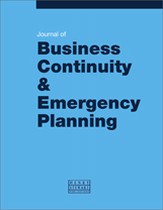Using community triage centres or non-traditional care facilities during a flu pandemic or other infectious disease outbreak
Abstract
One assumption of pandemic planning is that, during an influenza outbreak, acute care facilities may be quickly overrun with patients and as such must prepare in advance. In order to operationalise one component of a pandemic plan, Capital Health in Edmonton, Alberta, piloted a mobile triage centre facility (portable isolation containment systems) and tested pandemic influenza triage and assessment guidelines in the winter of 2006–07. The mobile model provided emergency department surge capacity for communicable disease emergencies with scalable deployment capabilities. The deployable module has several advantages over a fixed structure like a community facility. The triage facility is a location for short-term treatments, such as intravenous therapy, prescriptions, medication distribution, and self-care education, which are needed during a pandemic influenza outbreak. Decanting infectious patients away from the emergency department protects a highly-vulnerable hospitalised group from viral transmission. Based on the pilot, it is found that community triage centres are a viable support option for emergency departments in an urban setting during pandemic influenza.
The full article is available to subscribers to the journal.
Citation
Bone, Eric, Grono, Shawn, Johnson, David H. and Johnson, Marcia (2008, April 1). Using community triage centres or non-traditional care facilities during a flu pandemic or other infectious disease outbreak. In the Journal of Business Continuity & Emergency Planning, Volume 2, Issue 3. https://doi.org/10.69554/KCZD5462.Publications LLP
